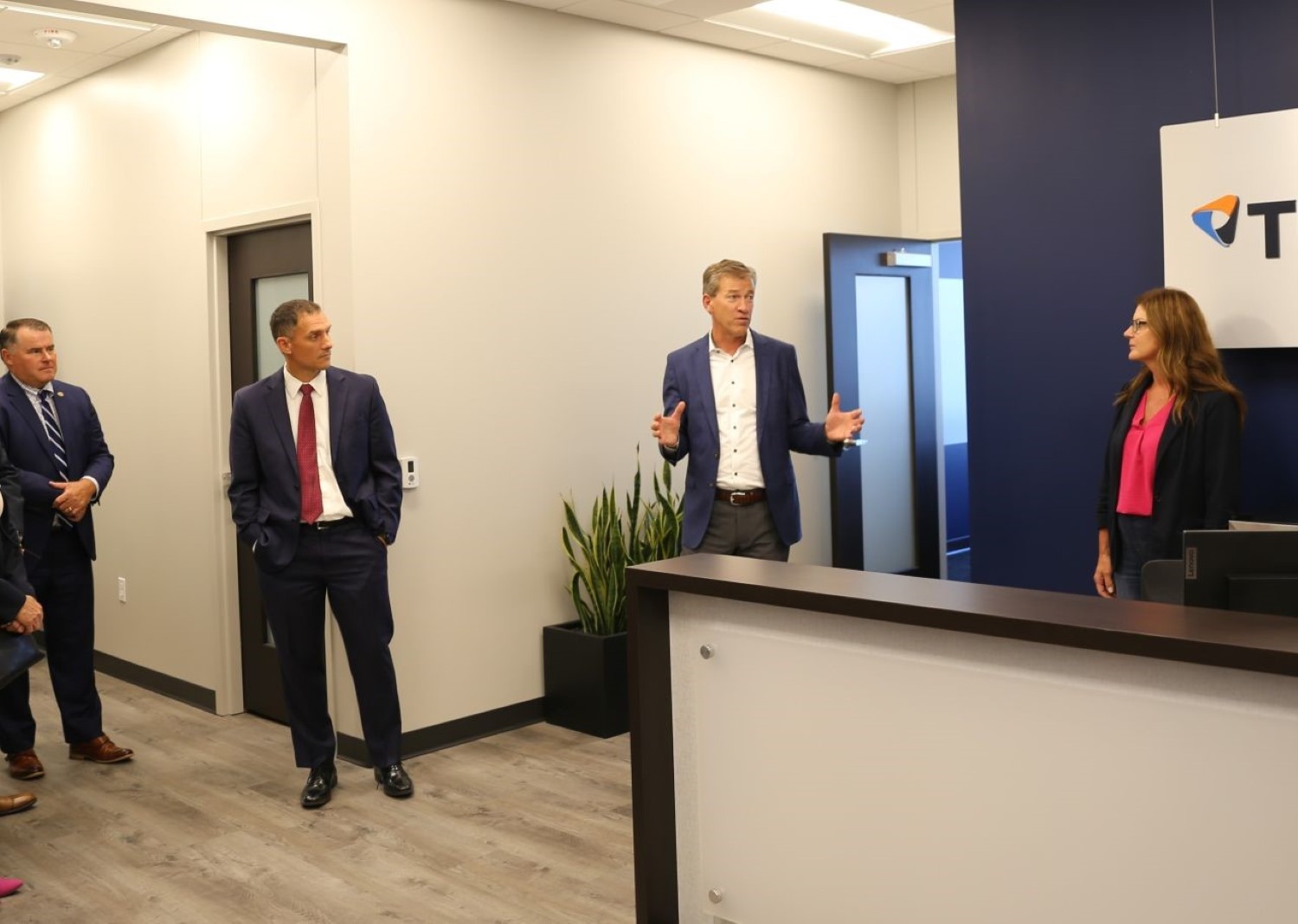Thirsty of Cash – Online Lenders are Increasingly Popular among Small Businesses
In Kansas, confidence among small business owners is closing in on a pre-pandemic high, according to a new survey. The recent MetLife & U.S. Chamber of Commerce Small Business Index showed a post-pandemic high, reporting a 69.2 index score in its Quarter 3 findings. The score is up from 63.1 recorded in Quarter 2, which demonstrates that small business owners are growing more optimistic about their future.
Despite growing optimism, more than half of small business owners surveyed still say inflation is their biggest challenge. Fifty-six percent also said keeping up with the salary expectations of employees is a challenge.
In this hostile environment, pausing hiring is the smartest solution even in a workforce crisis as businesses post “help wanted” signs and can’t find enough workers.
Kansas Businesses Pausing Hiring Amid Workforce Crisis
Labor conditions remained mostly unchanged in the Tenth District during June 2023, with noticeable differences across sectors. Manufacturing contacts reported modest declines in employment amid slowing orders and weakening demand. In contrast, services contacts reported a slight increase in hiring driven by steady consumer spending.
Despite the more sluggish pace of hiring recently, wages continued to grow moderately driven largely by still-tight labor conditions for services firms. Although the level of hiring was mostly unchanged, expectations for job growth and labor utilization over the next 6 months continued to soften.
In fact, contacts generally expected a slight decline in their employment levels over the coming months and are reportedly already reducing hours worked. When asked, the over whelming majority of contacts indicated they are not yet planning to layoff workers to reach a lower headcount.
Instead, they indicated plans to post fewer positions and pause hiring activity in lieu of laying off employees. For example, one contact expressed that “pausing hiring now and relying on attrition helps to avoid harder decisions later.”
Companies have slowed the pace of hiring due to concerns about an economic slowdown, but there is an underlying issue that forces them to reduce, and that is credit card problem. To be more specific, we are bringing late payment problem on the table.
New Roadblock Occur – Credit Payment Problem
Small and micro businesses continued to experience financial difficulties due to the rising cost of inputs and hiring constraints. Contacts reported recent financial challenges caused them to increasingly access nontraditional forms of credit with higher interest rates, such as credit cards and online lending platforms.

Moreover, a growing number of businesses reported paying only their minimum credit card payment, or missing payments completely, which has negatively impacted their credit reports.
Late payments are a common challenge for small business owners, especially in times of economic uncertainty. Unlike consumer credit cards, business credit card companies operate with fewer regulations, allowing fees and penalties to catch you off guard.
One common consequence is a late fee, typically around $39, imposed promptly. Setting up automatic payments is a smart way to sidestep these pesky charges.
Late payments can also trigger a significant increase in your Annual Percentage Rate (APR), jumping from the usual 14% to nearly 30%. Unlike consumer cards, business credit cards may impose this penalty immediately.
Additionally, your business credit score could take a hit, possibly dropping an entire tier. Some lenders may even report your late payment to consumer bureaus, affecting your personal credit score as well.
About the local views on loan demand were mixed across the District June 2023, but concerns about the effects of rising credit costs, particularly on consumer loan types, were ubiquitous.
Some people also noted concerns for commercial real estate (CRE) credit quality, particularly credits backed by office properties, and expected credit quality to worsen across all loan types over the next six months.
Credit standards remained unchanged, though some respondents highlighted reduced risk appetite for CRE deals. Deposit balances declined in June as customers moved to competitors offering higher yields or invested in U.S.
Treasuries after the resolution of the debt ceiling. Deposit insurance coverage and the desire for diversification also drove movement of large customer balances and contributed to continued tightening in banking system liquidity.
Way Full of Rocks – Smaller Institutions Strain Under Banking Stress
Small-business owners are increasingly worried about getting loans — and they believe proposed regulations on banks would make things even worse.
According to a new survey by Goldman Sachs 10,000 Small Business Voices, 28% of small-business owners applied for a new business loan over the last year, and 70% of those owners said it was hard to access capital — up from 61% who said the same in survey results released by the group in April.
Additionally, 76% said not being able to access affordable capital has negatively impacted their business, and 73% said rising interest rates are having a negative impact on their business.
The Federal Reserve has raised its reserve rate from near zero early last year to 5.5% so far in 2023.
Meanwhile, the Fed is seeking public comment on a proposal that would require banks with assets of $100 billion or more to hold more money in reserve and would change the risk calculations for certain assets.
Eight-four percent of the small-business owners surveyed said they are concerned the proposal, known as the Basel III Endgame, would negatively impact their ability to get loans.
“Small-business owners are hanging on by a thread, but the thread is getting increasingly thin as capital is becoming more difficult and more expensive to access, meaning many businesses are having to halt growth plans and consider cost-cutting measures,” said Jessica Johnson-Cope, CEO and president of Johnson Security Bureau and chair of the National Leadership Council for 10,000 Small Businesses Voices, in a statement outlining the group’s latest findings.
She added, “Small-business owners appreciate the work of Congress to examine the impacts of the Federal Reserve’s Basel III Endgame as we are concerned the proposal will only worsen the ability of many small businesses to access capital.”
Of course, the banking industry suffered through several high-profile collapses this year, most notably that of Silicon Valley Bank in March, a development that has revealed weaknesses in many banks’ balance sheets. Less than two months after the failures of Silicon Valley Bank and Signature Bank, regulators took control of First Republic Bank and sold the bank’s assets to JPMorgan Chase & Co.
The fear that business deposits above the typically-insured Federal Deposit Insurance Corp. limit of $250,000 would be lost forced the Federal Reserve to guarantee all deposit amounts at those institutions.

The survey also found that 68% of small-business owners have outstanding business loans or lines of credit. Of those owners, 58% have a fixed interest rate, while 42% have a variable interest rate. 63% of those with outstanding loans or lines of credit say rising interest rates have impacted their ability to service their existing debt obligations.
68% of those with outstanding loans or lines of credit say they would not be able to maintain current operations or grow their business without their business loan or line of credit.
The survey results come as big banks continue to pull back on lending. Loan approvals at banks with more than $10 billion in assets dropped from 13.3% in July to 13.2% in August. Approvals have dropped every month since June 2022, sliding from a rate of 15.1% in August 2022.
“If you are a small business looking for funding, you will have a difficult time securing it from big banks. We have seen it for more than a year,” said Rohit Arora, CEO of Biz2Credit, in statement detailing the latest loan-approval findings. “Big banks always had deposit money on hand. They always thought of it as permanent cheap capital. Now the interest rates are higher.”
Larger banks are hampered by the cost of their branch network even as the Covid-19 pandemic pushed more customers into digital banking — a trend that will not reverse itself, Arora said.
Meanwhile high interest rates mean consumers can get a good return on their money without depositing it in a bank, Arora said. That, in turn, hurts bank lending, as banks have fewer deposits on which to draw.
“Following the collapse of SVB and other mid-sized banks, we increasingly see depositors taking money out of banks and putting it into U.S. Treasuries, money market accounts and elsewhere. They have less money available to lend,” Arora said.
With bad credit score, the chance for businesses to borrow again is less likely. But even with the tightening lending environment right now, even businesses with good credit score can’t access to the cash easily. That’s why some have even turned to online lenders and other non-traditional financial institutions that usually offer loans with less-than-favorable interest rates.
Branching Into New Places – Online Lenders as the Silver Bullet
The SBCS is an annual collaborative effort of the 12 Reserve Banks of the Federal Reserve System designed to provide policymakers, researchers and service providers with key information on small business financial needs, decisions and outcomes.
Toward that end, the survey asks small business owners to describe their current business climate, recent financial needs and credit experiences.
In 2019, the Federal Reserve used its 2018 survey data to produce an update on online lender applicants. This was done in light of the growth of online lending in recent years.
Online lenders use data-driven technology and processes to provide financing services such as underwriting, pricing, servicing and fund delivery. They offer various products to borrowers, such as long-term loans, short-term loans, lines of credit and merchant cash advances.
In the years previous to the survey, use of online lenders for such services grew rapidly. The share of financing applicants who sought funds from an online lender increased from 19% in 2016 to 24% in 2017 to 32% in 2018. This trend has continued to advance since the survey was conducted.
An annual survey by financial firm JPMorgan Chase released in January 2021 found that in 2020, 44% of small businesses explored online lending, while 25% took an online loan. Over half of small businesses said they would consider an online loan if they needed capital in 2021.
Online lenders are increasingly popular among small businesses, with 32% of them seeking financing from online lenders, according to a report. This contrasts with 49% who turned to large banks, 44% to small banks, and 9% to credit unions for financial assistance. Businesses that opt for online lenders typically exhibit specific characteristics that set them apart.
Online lenders appeal to businesses with lower credit scores, financial difficulties, and less profitable performance. These businesses often seek quick financing for operational expenses and bridging cash flow gaps.
The frequency of application for online financing varies, with those exclusively using online lenders applying less frequently than those utilizing both online and conventional sources. The types of loan products sought by online applicants include business loans, lines of credit, SBA loans, auto or equipment loans, and merchant cash advances.
In terms of the amount of financing sought, online-only applicants and those using both sources tend to seek lower amounts, with a significant portion seeking $25,000 or less. This aligns with the preference for online lenders for quick access to smaller sums of capital.
The motivation for selecting online lenders often revolves around speed and approval rates. Online-only borrowers prioritize lenders they perceive as providing faster access to funds and higher approval rates, while applicants seeking conventional funding prioritize existing relationships with lenders.
The Quick Saver for Bad Credit Squad?
Online business loans let business owners access cash to cover expenses, buy equipment and otherwise cover operating costs. Online lenders often feature more streamlined application processes than traditional banks and credit unions, with many imposing less rigorous lending standards based on nontraditional metrics. This means that online business loans may be more convenient and accessible—even to new businesses and less qualified business owners.
Nothing about getting a traditional small-business loan is quick. Traditional lenders often take weeks or even months to make a decision, and that can be problematic if you’re trying to ramp up for a new contract or take advantage of a short-term opportunity to buy inventory at a discount.

The good news is that many online lenders can approve a loan application within a few hours and deliver the funds within 24 to 48 hours. Technology makes the process quick and seamless for borrowers, which saves them a significant amount of time and hassle.
However, small businesses need to know all the risks to online lenders, because they are significant and often underestimated. Unlike personal loans, small-business loans obtained through online lenders lack the consumer protections provided by statutes like the Truth in Lending Act and Fair Debt Protection Practices Act. While fintechs are subject to some disclosure standards, small business borrowers may not fully comprehend the potential pitfalls.
Small businesses, despite their financial sophistication, lack the resources of larger firms, including teams of accountants and lawyers. They require similar protections as consumers. Without these safeguards, they may unwittingly commit to predatory loans that could lead to financial ruin.
Concerns have arisen about the opacity of interest rates and credit-scoring methods used by online lenders, particularly impacting minority-owned and small businesses. Data on fintech companies is often elusive due to a lack of mandatory disclosure requirements.
Research has shown that loans for small-business purposes are more likely to default, even after adjusting for borrower characteristics. Small-business owners often face interest rates five to eight percentage points higher than traditional banking institutions.
To mitigate these risks, policymakers should consider amending consumer protection statutes to cover nonbank loans made to small-business owners. This would ensure transparency in interest rates and loan terms.
While fintech can be a lifeline for small businesses, fair regulations are essential to prevent unsustainable debt and deepen economic inequalities during times of crisis.









